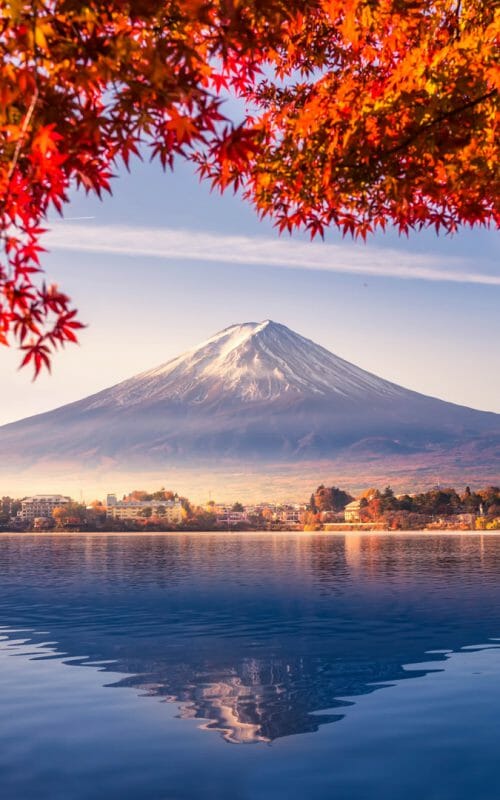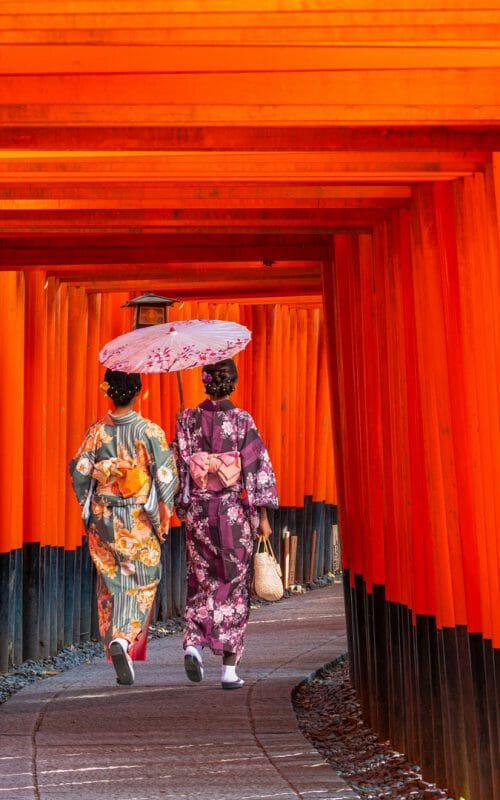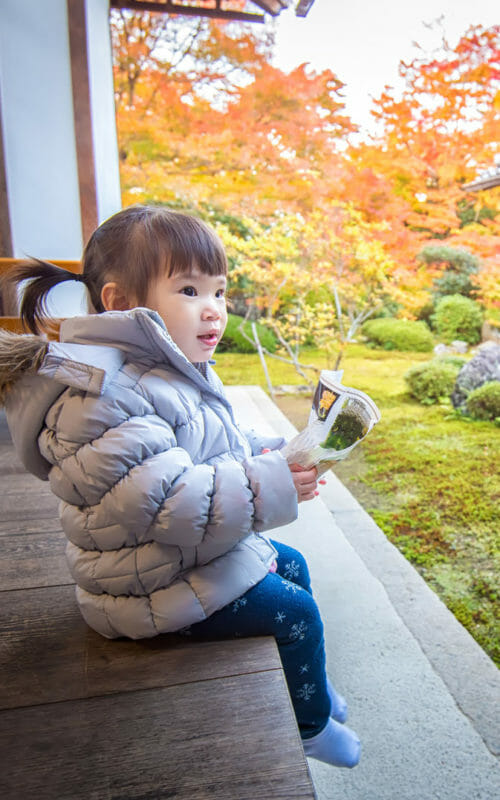As long as you travel through Japan with your eyes wide open, you will be met by a different element of Japanese culture at every turn. Perhaps you may witness a Shinto wedding when visiting a temple, maybe you will dine in a traditional yakitori bar, or you could see the latest Harajuku fashion on a young hipster in Tokyo. It may shock you or delight you but this is Japan; the land where traditional culture meets the modern day and they live happily side by side.
For many travellers, it is the time-honoured customs that are often the focus and most visit with a desire to see a geisha and stay in a ryokan; both which are easily arranged but do come at a cost, as with most things in Japan.
Meeting a geisha
The appearance of a geisha or geiko as they are known in Kyoto is one of their most recognisable features and it would be feasible to convince yourself of a sighting when strolling the streets of Gion in Kyoto. Not wishing to disappoint but there is a huge possibility that the kimono-clad, white-faced girl you spotted is just a tourist paying for the experience of dressing up. Highly believable no doubt but sadly not the real deal. The true, verifiable geisha’s are there, just hidden away in the ochaya, the tea houses. To meet one, much will depend on your budget and this will dictate the length of the meeting and the intimacy. Watching a tea ceremony being performed by a maiko (trainee geisha) is a wonderful way to experience two elements of Japanese culture and is very affordable. For those preferring to experience the authentic geisha skills of dancing and singing, a private dinner can be arranged. Only in Japan, can you be so hypnotised by such unique beauty of movement and meaning.
Staying in a ryokan
Any visit to Japan wouldn’t be complete without an overnight stay in a ryokan. These generally small inns offer a glimpse into the more traditional Japanese way of life; sleeping on a futon-style bed, enjoying a kaiseki meal and relaxing in an onsen. Ryokans offer a unique experience, different to hotels, and as such there are certain elements that are worth knowing about in advance. This can ensure you choose the right type of ryokan to suit your needs and expectations.
Sleeping arrangements at a ryokan
The minimalist rooms feature tatami mat flooring and on entering you are required to take off the slippers, which you will have exchanged for your outdoor footwear on arrival. Instantly you will notice that there is no bed, just a low table and chairs in the middle of the room. No need to be alarmed though as when you head down for dinner, the bed will be prepared for you. Unlike a typical hotel, the bed will be made up on the floor and is surprisingly comfortable and warm, dissimilar to our impressions of a futon as we know it in the West.
If sleeping low to the ground is not ideal for you, many ryokans are now offering western style beds allowing guests to have the ryokan experience with more modern comforts.
Eating at a ryokan
When staying in a ryokan, you will mostly be offered half board meaning you will take your breakfast plus your evening meal in-house. In some ryokans you can opt for breakfast only.
At meals times, you will make your way to the dining area in your yukata, the light robe left in your room. Some ryokans have tables and chairs whist others require you to sit on the floor. Once sat down, you will be presented with beautifully plated Japanese dishes such as sashimi, pickled vegetables, grilled fish, rice dishes and possibly a hot pot, all served one after the other. This is known as kaiseki, and, if you enjoy good Japanese food, is certainly a highlight of any ryokan stay.
A point to note though – Japan isn’t known for its tolerance towards dietary requirements so flexibility and understanding will be needed on your part if your diet is perhaps vegetarian or gluten free. It can help to explain in detail what you can and can’t eat and have it written in Japanese but this doesn’t always guarantee success as typical intolerance’s aren’t well understood in Japan. Dashi (stock made from fish flakes) and soy sauce are most problematic as they are ubiquitous in Japanese cuisine.
Ryokan bathing arrangements and etiquette
The onsens, or hot spring baths, in Japan blend nature with bathing, offering not just the chance to cleanse but also to relax and enjoy the surroundings. Ryokans will have gender specific onsens, important to know as bathing suits are not allowed. If this isn’t to your taste, most ryokans do also offer rooms with private onsens so you could relax in a bath on your own covered balcony instead.
If you have tattoo, it would be wise to cover this with a plaster or bandage so as not to cause any offence or simply choose a private onsen to avoid any uncomfortable feelings.
No matter which type of onsen you choose, before descending into the steaming pool of water, be sure to wash yourself. The shower may look different to what you are accustomed to as the Japanese tend to shower whilst sitting; using the shower head to wash away the soap once you have finished cleaning. Then feel free to step into the inviting although often very hot water, giving yourself time to breathe and unwind as the calming Japanese Zen takes over your mind.










